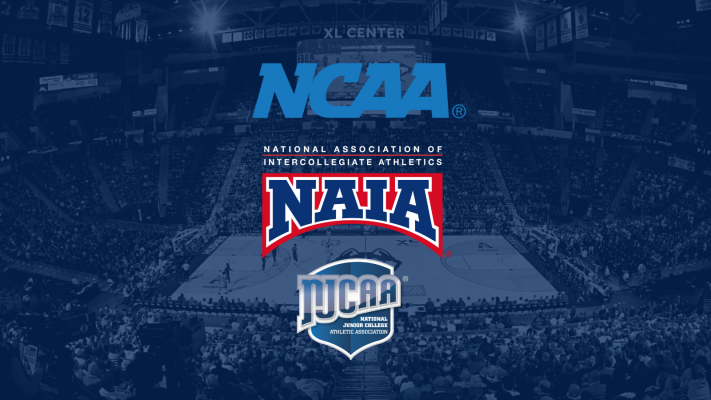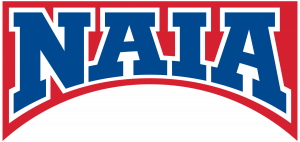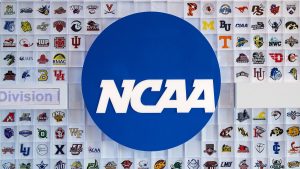College Sports
Intercollegiate Athletics represents a major enterprise in the US. Over 400,000 student-athletes are competing with more than 3000 universities.

NCAA
The NCAA is where the largest and most profitable teams participate. It distributes its money among its member institutions in numerous ways, such as providing scholarships, funding team travel and lodging expenses for championship games, and assisting with academic programs for student-athletes.
It is the largest intercollegiate athletic organization with over 1,100 universities. It conducts 90 National Championships in 24 sports across Divisions I, II, and III. It has 45 championships for women and 42 for men.
Students are overcoming challenges everyday to secure their deserved spot in either of the three divisions in the NCAA.
- NCAA Division 1 – Schools within Division one are typically the largest schools (in terms of student enrollment) with the most visible and widely-known sports programs. These schools generally devote the largest amount of funds to athletic programs and offer the most athletic scholarships.
- NCAA Division 2 – Division II student-athletes have the opportunity to participate on sports teams that compete at a high level while also pursuing higher education. They do not devote the same level of financial resources to athletics as division I schools.
- NCAA Division 3 – Academics are the primary emphasis in this division. Division III schools are prohibited from awarding athletic scholarships under NCAA rules. With 444 member schools, Division III has more participating institutions than the other two divisions.
Conferences
Each school is part of a conference and will compete against each other during the regular season. Many conferences have their championship games and based on their results may qualify for a National Championship. This varies from sport to sport.
Other than the NCAA, there are other associations of intercollegiate athletics: NAIA and the NJCAA
NAIA
The level of athletic competition in NAIA programs is similar to that of NCAA Division II schools. There are 23 conferences within the NAIA.
NJCAA
The National Junior College Athletic Association (NJCAA) exists to “promote and foster junior college athletics.” The organization’s member institutions must be accredited two-year colleges.


In college sports there are “sports by season”. So for example, for the the Fall season (Fall Term), the Mens Football team will be in season as well as the Men & Women soccer teams. Winter and Spring will also have their own set of sports.
Here are some important recruiting terms that you should be familiar with for college recruitment:
- Contact: Contact includes face-to-face interaction between a college coach and a prospective student-athlete or his/her parents.
- Contract period: The contract period is the time designated in the recruiting calendar when college coaches may make in-person, off-campus recruiting contacts and evaluations.
- Dead period: The dead period is the time designated in the recruiting calendar when college coaches are restricted from making in-person, off-campus recruiting contacts and evaluations.
- Evaluation: An evaluation is when a prospective coach or recruiting agent assesses a student athlete’s academic or athletic ability. Evaluations usually involve a coach or recruiter observing a game or practice.
- Evaluation period: The evaluation period is the time designated in the recruiting calendar when college coaches and authorized staff are permitted to make off-campus evaluations of prospective student-athletes academic and playing abilities.
- Five-year clock: If you play at a Division I school, you have five-calendar years in which to play four seasons of competition. Your five-year clock starts when you enroll as a full-time student at any college.
- Official Commitment: When you officially commit to attending a university, you sign a National Letter of Intent, agreeing to attend that school for one academic year.
- Verbal Commitment: It happens when you verbally agree to play sports for a college before you sign or are eligible to sign a National Letter of Intent. The commitment is not binding on you or the school and can be made at any time.
- National Letter of Intent: An NLI is an official agreement between a student-athlete and a prospective school stating the agreement to attend that institution for one academic year in exchange for athletics aid.
- Quiet Period: A quiet period occurs when a coach at an NCAA institution cannot have any in-person contact with a prospective student-athlete or their parents outside of the college’s campus.
- Recruiting: This happens when a college employee or representative invites a high school student-athlete to play sports for their college.
- Season of Competition: NCAA student-athletes are allowed to compete for four seasons in one sport. Division I and II student-athletes who compete for any amount of time during a season use up one season in their sport. Division III student-athletes who practice or compete after the first date of competition in their sports use up one season in their sport.
- Unofficial Visit: Any visit to a college campus by a college-bound student-athlete or his or her parents paid for by the college is an official visit.
- Walk-On: The term walk-on is to describe an athlete who becomes part of a team without being recruited beforehand or awarded an athletic scholarship.